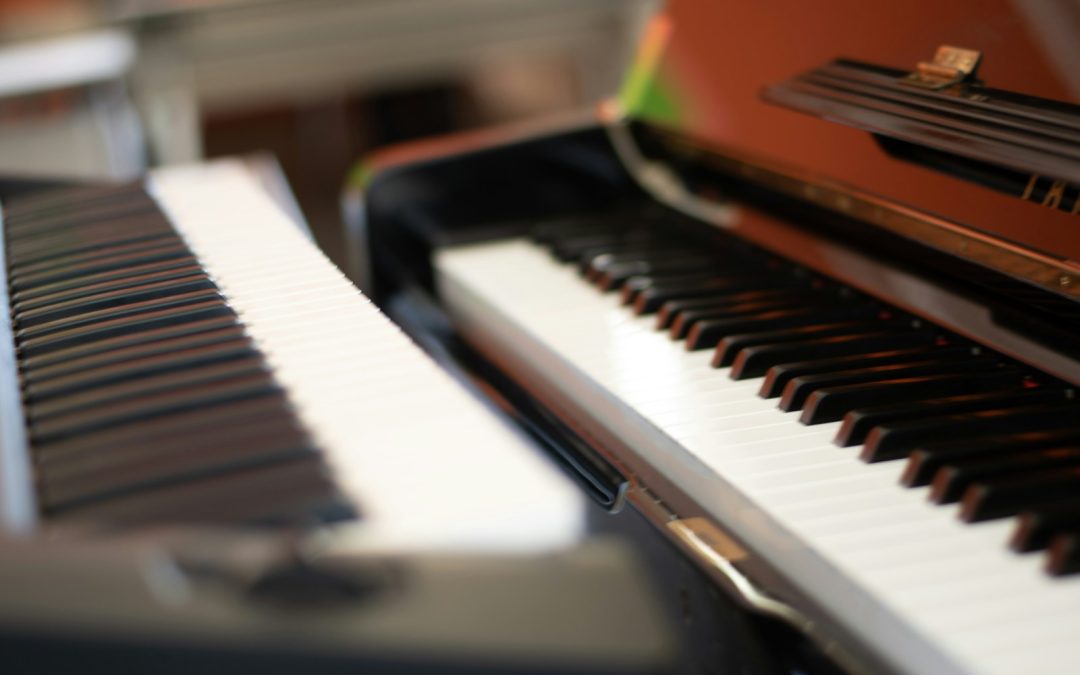So you're wondering, "Is 61 keys enough to play piano?" It's a common question I hear, especially from beginners or those looking to buy their first keyboard. I'll be diving into this topic, shedding light on whether 61 keys are sufficient for your piano playing needs.
In this article, we'll explore the structure of the standard piano keyboard, the range of notes it covers, and how this compares to a 61-key keyboard. We'll also touch on the types of music you can play on a 61-key piano and who might find this keyboard size most suitable.
Whether you're a budding pianist or a seasoned pro considering a more portable option, this article will provide the insights you need. Stay tuned as we unravel the mysteries of the 61-key piano.
The Structure of the Piano Keyboard
As we dive deeper into the world of piano keyboards, it's vital to understand its structure. The standard full-scale piano keyboard features 88 keys, encompassing a range of seven octaves plus a minor third (from A0 to C8).
A blend of 52 white and 36 black keys generate the plethora of sounds that we associate with the versatile piano. The seven white keys are usually labeled A to G, embodying the seven natural notes on the musical scale. Nestled between these white keys, you'll find the five black keys, representing the five sharp (#) or flat (b) notes.
| White Keys | Black Keys | Total Keys | |
|---|---|---|---|
| Standard Full-Scale Piano | 52 | 36 | 88 |
This pattern repeats across the length of the keyboard, an aspect known as octave repeatability. This unique structure gives the player the option to play the same melody at different pitches, enabling a myriad of creative options.
Our compact 61-key piano however slightly diffuses the full octave reach of its 88-key counterpart. It generally ranges from C1 to C7, essentially chopping off some of the lowest and highest notes from the full-scale piano. This is an important point to consider when comparing the 61 and 88-key pianos, but does the reduced number of keys dramatically affect the ability to play a wide array of tunes? To provide a comprehensive answer, we'll delve into the impact of these dimensions on the types of music that can be played, as well as potential convenience of a 61-key piano in upcoming sections of the article.
The Range of Notes on a Standard Piano Keyboard
A full-sized, 88-key piano ranges from A0 all the way up to C8. That's over seven full octaves! The lower end of the scale has a breath-taking bass who's sound sends vibrations rolling through your body. The higher end, on the other hand, delivers a crisp, bright tone that can pierce through the thundering sound of other instruments.
To break it down visually, each key on a piano corresponds to a specific note. Every octave consists of 12 keys: 7 white and 5 black. The white keys are named after the first seven letters of the alphabet, from A to G. The black keys are either a half step up (sharp) or down (flat) from the adjacent white keys.
Here's a simple table to illustrate this:
| Octave | White Keys | Black Keys (Sharps/Flats) | Number of Keys |
|---|---|---|---|
| 1 | A, B, C, D, E, F, G | A#/B♭, C#/D♭, D#/E♭, F#/G♭, G#/A♭ | 12 |
| 2 | A, B, C, D, E, F, G | A#/B♭, C#/D♭, D#/E♭, F#/G♭, G#/A♭ | 12 |
| ... | ... | ... | ... |
| 7 | A, B, C, D, E, F, G | A#/B♭, C#/D♭, D#/E♭, F#/G♭, G#/A♭ | 12 |
| Plus 3 extra keys in the last Octave | A, B, C | 3 |
In essence, the construction of the piano keyboard is rooted in western music theory. It's designed to aid the understanding and playing of both major and minor scales, along with various modes. The 88-key setup, specifically, serves to cater to the tonal repertoire of classical music. It's built to encompass all the notes that composers from Bach to Beethoven, and on to contemporary times have employed.
How Does a 61-Key Keyboard Compare?
Transitioning from the world of 88-key pianos, a 61-key keyboard may seem like quite a shift. However, it's vital to break down what this change really entails.
For starters, 61-key keyboards lack some of the lowest and highest notes found on an 88-key piano. They roughly cover the notes from C2 to C7, skipping the first and last octaves. While this may seem restrictive, keep in mind that a significant portion of most music can be played within this range. After all, compositions tend to stick to mid-range notes that are easily audible and pleasant to the ear.
Important to note is the aspect of portability. 61-key keyboards are naturally smaller and lighter, making them a solid choice for traveling musicians or those with tight living spaces.
Another factor to consider is the black and white key arrangement. Like the full-sized counterpart, 61-key keyboards adhere to the same pattern, fostering an effortless transition when learning or practicing various major and minor scales or modes.
However, the most significant factor perhaps lies in the repertoire. You can play the lion's share of pop, rock, and even jazz music with a 61-key keyboard. Yet, if you're keen on diving into the realm of classical music, 88 keys still reign supreme.
Here's a quick comparison table:
| Attribute | 88-Key Piano | 61-Key Keyboard |
|---|---|---|
| Note Range | A0 to C8 | C2 to C7 |
| Portability | Less portable | More portable |
| Key Arrangement | White and Black pattern | White and Black pattern |
| Repertoire Range | Fully Supports Classical | More Suitable for Pop, Rock, and Jazz |
Remember, determining whether 61 keys are enough to play the piano largely hinges on your musical goals and preferences. Whether you’re a budding musician or an experienced maestro, the right keyboard can make or break your journey.
What Can You Play on a 61-Key Keyboard?
Well, I'm glad you asked. When it comes to the 61-key keyboard, there's a lot more versatility than you might realize. It doesn't have the full range of an 88-key piano, true, but it still offers plenty of opportunities to make great music.
In fact, a large portion of pop, rock, and jazz music can be easily played on a 61-key keyboard. This is due to the fact that most of these genres heavily utilize middle octaves, ranges that are well within reach of your 61 keys. Rock pieces, particularly those written for bands, often only use a fraction of the keyboard, focusing on just one or two octaves.
Experimenting with different genres isn't just possible on a 61-key keyboard, it's actually quite enjoyable. You'll find that there's a satisfying feeling in adapting music to fit the 61-key range. For instance, some jazz pieces can be played using only the middle registers.
Challenge yourself by learning how to adapt pieces written for the full 88 keys to this smaller keyboard. You may be surprised at how different - and exciting - a familiar piece of music can sound when you transform it in this way. Granted, it's not straightforward, but it's an excellent exercise for enhancing musical adaptability and creativity!
Now for classical music lovers, here's a caveat - some pieces, particularly those by composers like Beethoven or Chopin who often use extreme ranges, may be difficult to adapt to a 61-key keyboard. However, there are still many pieces, like a good number of Bach's Inventions or Mozart's Sonata movements, which fit nicely within its range.
All in all, the 61-Key Keyboard, despite its limitations, offers a host of possibilities for the enthusiastic musician.
Who Would Benefit from a 61-Key Keyboard?
Pop, rock, jazz, and many other music genres are beautifully adaptable to 61-key keyboards. Musicians who primarily delve into these areas would find such a keyboard wholly satisfactory. Additionally, people desiring the aspects of portability and convenience would thoroughly enjoy this range of keys.
Gigging musicians in particular, favor the 61-key layout because of its ease of transport. The lightweight design of most 61-key keyboards allows these performers to quickly set up, tear down, and be ready to hit their next venue without the burdensome weight of a full-sized keyboard. It's a boon for active musicians always on the roll!
Another significant benefit of the 61-key variant applies to emerging keyboard artists. Young students or beginners who are just learning to navigate the complicated world of keyboard fingering and theory find it less intimidating. The limited number of keys helps them focus on fundamentals and slowly build their skills. For beginners, it's an excellent starting platform before transitioning to an 88-key piano.
The 61-key keyboard also provides an excellent bridge for musicians who are used to playing other, less extensive instruments such as the organ or harmonium. Transitioning to a full piano can be daunting and the 61-key keyboard offers a helpful step in the process.
However, the 61-key keyboard's abilities aren't just confined to the versatility of genres. Electronic genres like EDM and synth-wave also utilize these types of keyboards, but not in the conventional manner. They require a keyboard controller, often a 61-key keyboard with a multitude of different knobs, sliders, and drum pads for creating unique sounds.
The 61-key keyboard offers a versatile interface that meets the needs of musicians from various backgrounds. Its adaptability and transportability make it ideal for gigging musicians who value quick setup and takedown, beginners who are just starting, and even electronic artists seeking creative freedom. However, those looking to master classical pieces written for the full 88 keys might find this variant a touch restrictive. But who's to say? Limitations often breed creativity, don't they?
Conclusion
So, is 61 keys enough to play piano? Absolutely! For many musicians, a 61-key keyboard is more than satisfactory. It's versatile, portable, and perfect for genres like pop, rock, and jazz. It's also a great tool for beginners to focus on building their skills. Electronic musicians find it ideal for creating unique sounds. But let's not forget, it's not for everyone. If you're seriously into classical music, you might find it limiting. So, it all boils down to your needs and the music you're into. Choose wisely, and you'll find that a 61-key keyboard can be a fantastic musical companion.
Harlan Kilstein began playing piano during covid with no piano background at all. He taught himself how to play learning what to do and what not to do.
Today he's an advanced intermediate player and can help you grow in your skills because he learned all this on his own.








